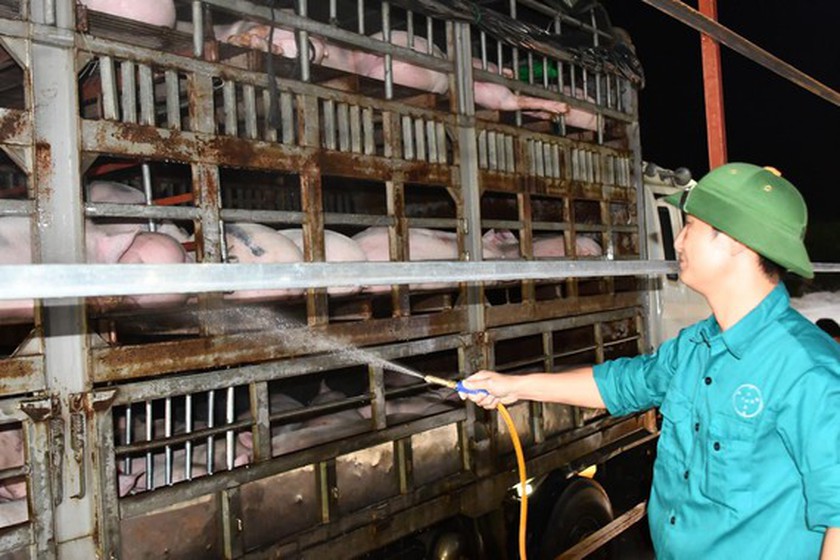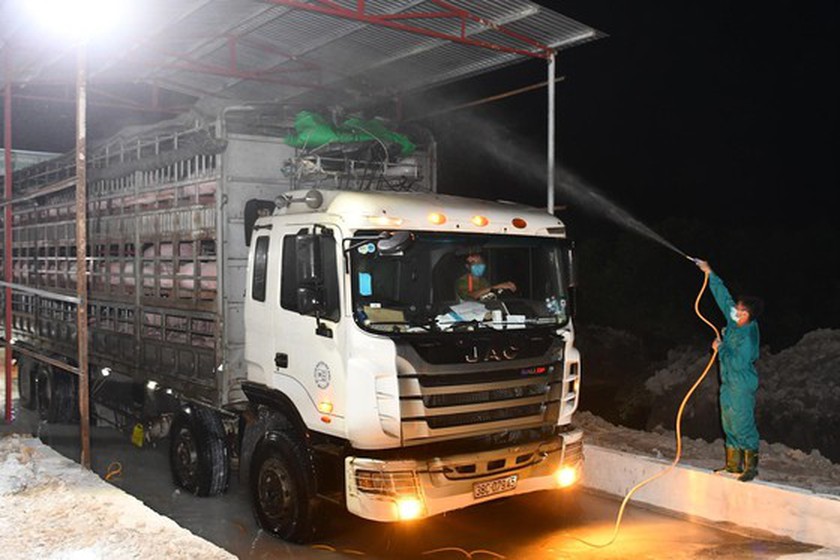Vietnam Suspends Thai Pig Imports
Despite the ban, there are still batches of live pigs that companies have approved of the two countries. These shipments need to reach Vietnam by June 29, 2021. Based on a report from the Ministry of Agriculture and Rural Development, a directive has been given to the veterinary agency to control the loads to ensure food hygiene and safety. The Agriculture and Rural Development Ministry also assigned the Department of Animal Health to coordinate with the Thai authorities to evaluate the ASF situation in Thai pigs bred for slaughter and consider approving importation when conditions on disease safety are guaranteed.

A truck carrying live pigs imported from Thailand through Lao Bao Border Gate is being sprayed for disinfection. (Source: MARD)
Previously, due to a severe deficit in the domestic pork supply causing the cost of pork in Vietnam to increase, the Ministry of Agriculture and Rural Development signed a document authorizing live pigs from Thailand to be imported into Vietnam for slaughter for food or farming in 2020. This was the first time the Vietnamese government allowed the import of live pigs for meat.
Market Impact
According to the Vietnamese Ministry of Agriculture and Rural Development, the country imported more than 500K live pigs from Thailand in the second half of 2020. The total amount of imports amounting to nearly 226K tons of pork last year, a 260% rise compared to 2019. The primary sources of pork imports are Russia, Poland, Brazil, Canada, the US, Germany, and Spain. Regarding live pig imports from Thailand, statistics from the Department of Animal Health revealed that more than 503K pigs were imported into Vietnam from mid-June 2020 to January 13, 2021.

The ban is expected to severely hurt Thailand, as the country has benefited from the increased demand for pork in Vietnam. In the first quarter of 2021, the country imported 34,600 tonnes of pork (HS code 0203), worth USD 80.07 M, up 101.4% in volume and 102.3% in value over the same period last year.